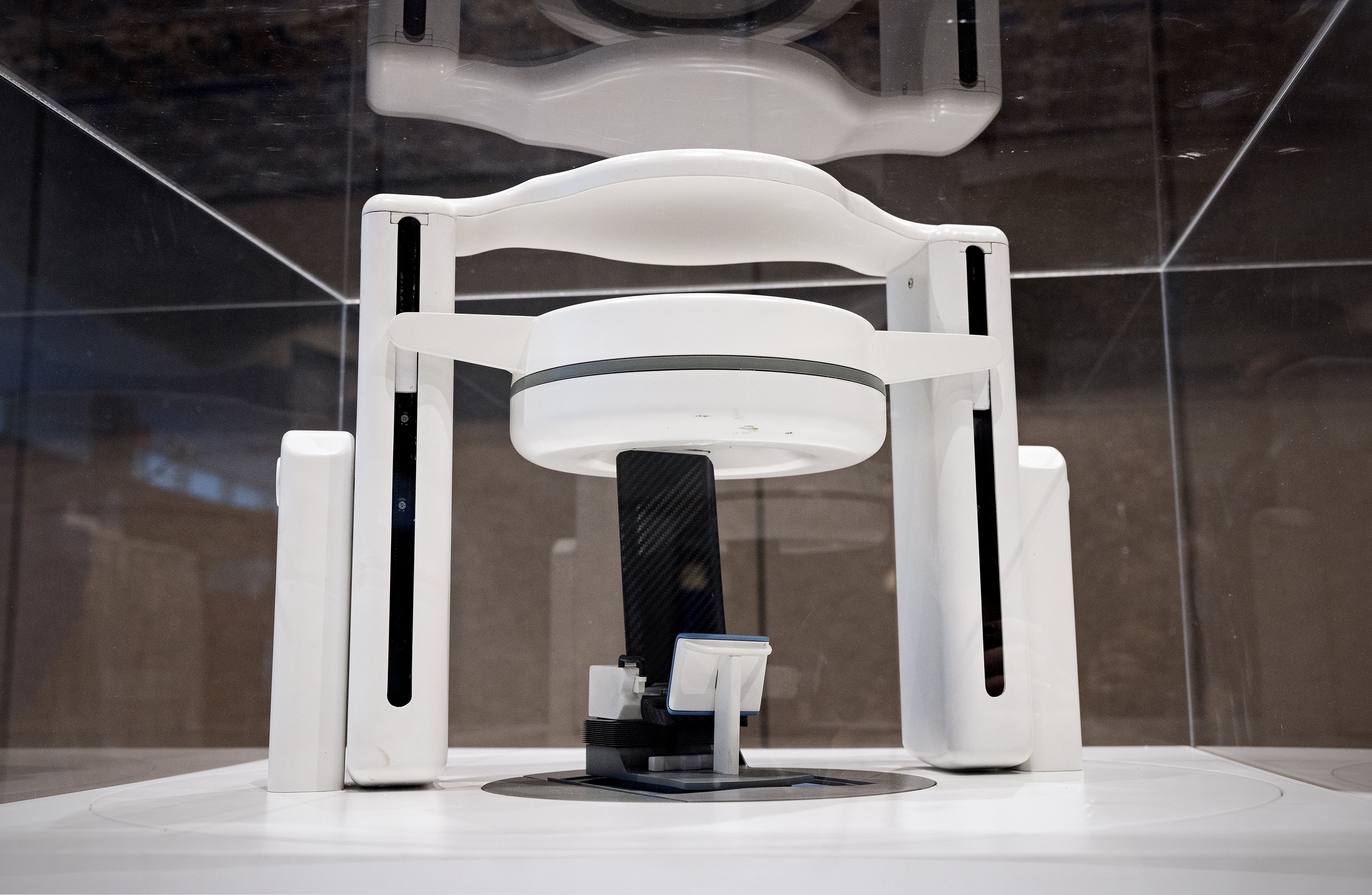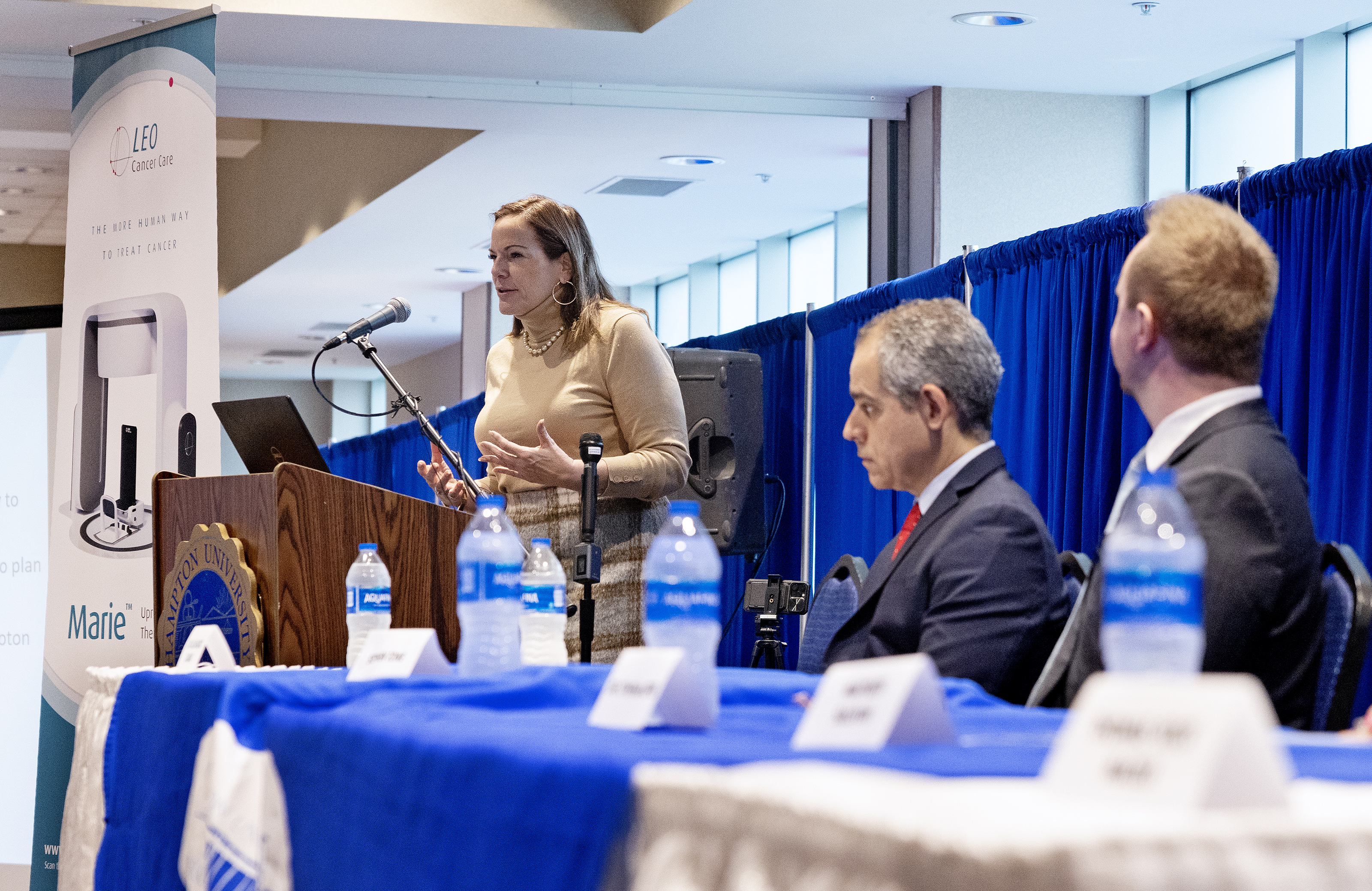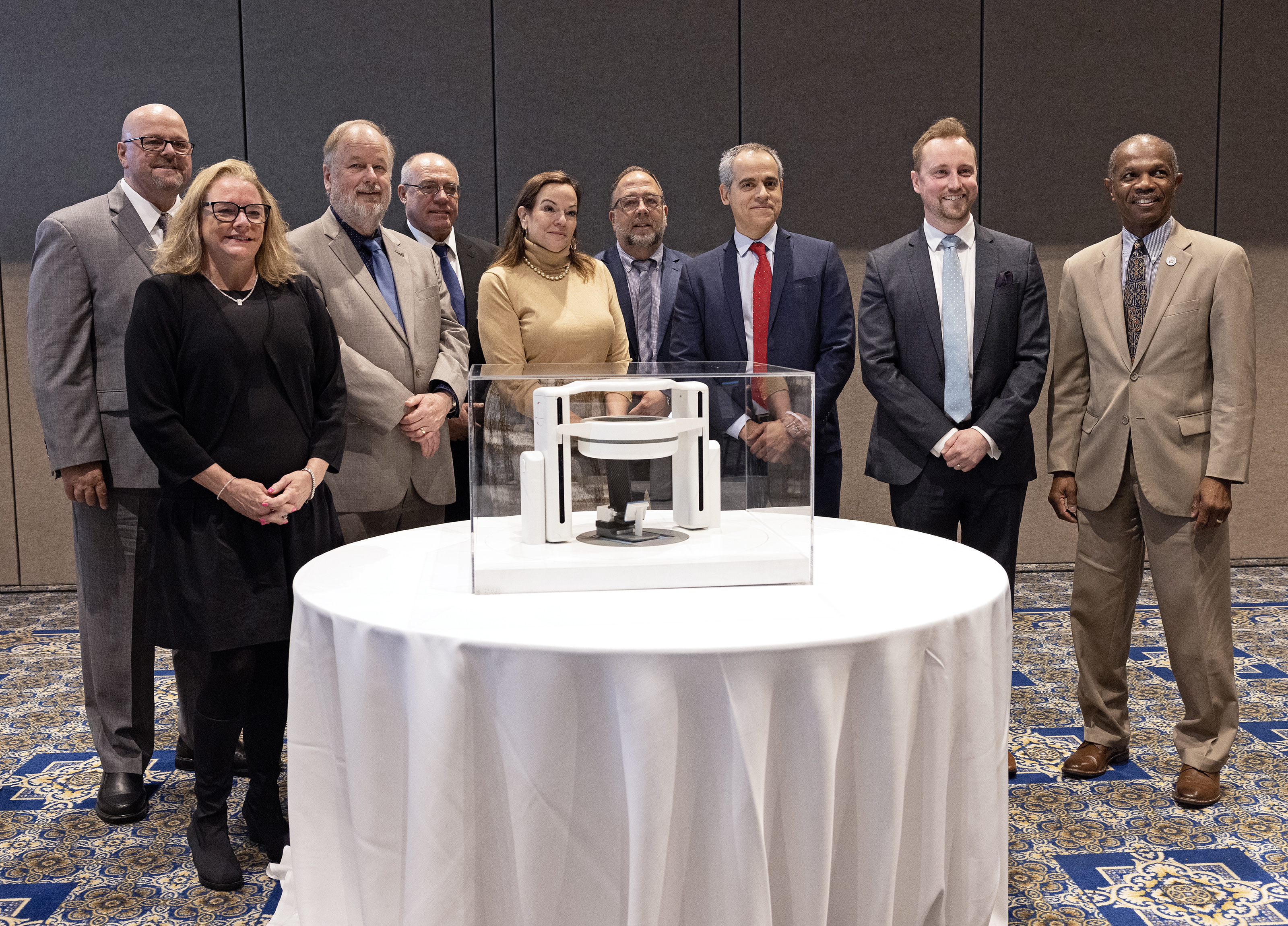Note: This news release was posted by the Hampton University Proton Therapy Institute regarding a new partnership involving Leo Cancer Care and Jefferson Lab.
Hampton University Proton Therapy Institute teams up with Leo Cancer Care to install upright patient positioning and imaging in an existing fixed proton beam treatment room
Hampton University Proton Therapy Institute (HUPTI) has entered into a unique partnership with Leo Cancer Care to help advance research into Proton Arc Therapy (PAT).
The partnership will see HUPTI – based in Hampton, Virginia – engage Leo Cancer Care to repurpose an existing fixed-beam proton therapy treatment room by installing its advanced upright patient positioning system and CT scanner.
Proton beam therapy (PBT) is acknowledged as a viable and effective method of non-invasively treating many forms of cancer by more precisely targeting tumors and sparing healthy tissue from unnecessary radiation.
Current PBT delivers radiation from a selected number of angles around the patient, which limits the options to conform the treatment to the tumor best. Because PAT delivers dosing from a multiplicity of angles, it permits better conformity, thus the most biologically effective dose to the tumor, which improves the prognosis of the treatment. Current gantry-based delivery treatment methods pose incredible challenges for delivering PAT with sufficient precision. Upright imaging and positioning technologies remove the need for a gantry because it uses patient rotation for treatment delivery. This could prove more conducive to the PAT approach. HUPTI will analyze and assess the Leo system’s effectiveness.
Dr. Alejandro Carabe, the chief medical physicist at HUPTI, said, “The development of an upright proton arc therapy treatment technique represents a paradigm shift in the field that will combine technological and therapeutical advances, which will make our Center a unique Institution capable of delivering the most advanced proton delivery mode in the world.”
Stephen Towe, Leo Cancer Care’s chief executive officer, said the installation will take place in phases – beginning with the patient positioning system and the diagnostic quality upright CT scanner – on an experimental non-clinical basis and not requiring FDA clearance or integration with the existing proton therapy system.
“This phased implementation will allow the centre to accelerate world-class research into the benefits of Proton Arc Therapy and proton imaging. Research will begin very soon on ‘phantom’ patients yielding initial results much faster than full clinical implementation.” said Towe.
Leo’s patient positioner precisely and reproducibly positions the patient in a seated position for irradiation of target tumors. The CT scanner, specially developed to image the patient in the upright position, comprises a CT scanner ring mounted on a gantry structure with support arms that tilt about a horizontal axis while allowing the CT ring to be translated along the arms using precision slide rails.
Nick Schreuder, Leo Cancer Care’s Chief Scientific Officer, said the HUPTI facility would reap numerous benefits from upgrading the fixed beam room with upright imaging and positioning. He said the Leo system is “perfectly suited” to advancing research and the clinical development of PAT at HUPTI.
“More importantly,” he added, “HUPTI will be able to deliver the best possible proton therapy to future patients.”
MaryBeth Sullivan, HUPTI’s executive director, said, “We are so excited to be collaborating with Leo Cancer Care. Seated treatments will make patients’ treatment much easier, especially for those unable to lie flat for treatments. HUPTI will be the first on the east coast to have this ability to deliver proton therapy.”
Cynthia Keppel, Jefferson Lab associate director for Experimental Nuclear Physics, participated in the partnership announcement. Keppel oversees one of the largest divisions at Jefferson Lab, which houses also a small contingent related to medical instrumentation development, including a cooperative research effort that will support the new technique for using proton beams to treat cancer. Keppel had a lead role in the scientific development of the Hampton University Proton Therapy Institute and served as its scientific & technical director and senior executive director prior to her current leadership role at Jefferson Lab. Her remarks centered on the scientific and technical aspects of HUPTI therapy and on cooperative development going forward for this new effort.





